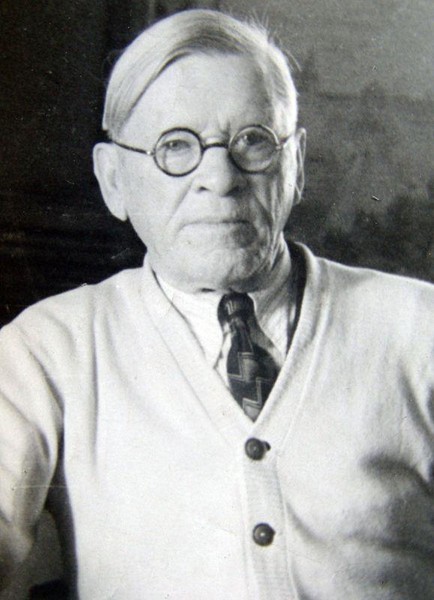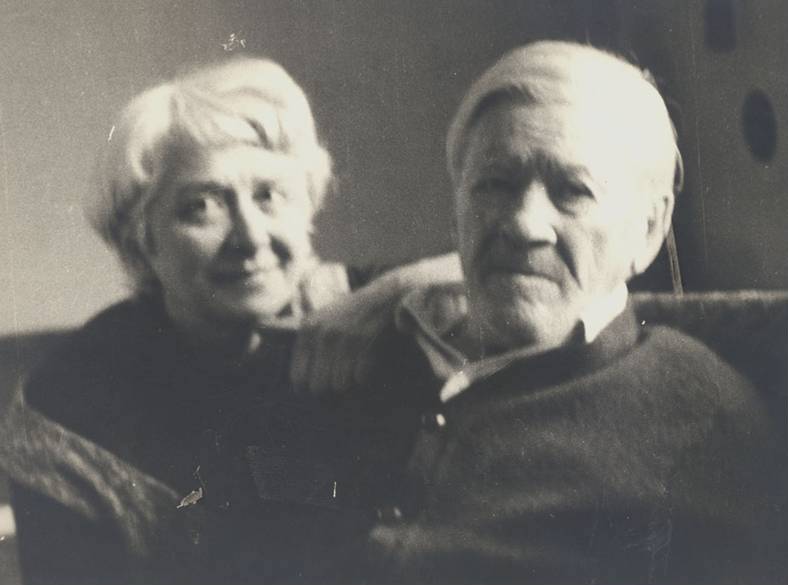Archive
Mikhail Kichigin
- Mikhail
- Kichigin
Mikhail Kitchiguin; Михаил Александрович Кичигин
- 02-05-1883
- Perm’ (RU)
- 15-11-1968
- Yaroslavl' (RU)
- ArtistDesignerTeacher
Mikhail Kichigin was Shanghai’s preeminent émigré artist in the 1930s and 1940s. He travelled extensively around China and Eastern Asia, exhibiting his work and conducting visual studies. A versatile professional and a respected art instructor, he influenced a number of young artists from the Russian diaspora.
Word Count: 47

Mikhail Kichigin, photography, 1968 (© Yaroslavl Art Museum). 
Mikhail Kichigin, Self-portrait, drawing, around 1920 (© Yaroslavl Art Museum). 
Mikhail Kichigin in his studio at 10 Avenue Dubail, photography, Shanghai (© Yaroslavl Art Museum). 
Mikhail Kichigin, Model in Traditional Costume, painting, Shanghai (© Yaroslavl Art Museum). 
Mikhail Kichigin, Abandoned Temple, oil painting, Shanghai (© Yaroslavl Art Museum). 
Vera Kuznetzova and Mikhail Kichigin in Yaroslavl, photography, 1968 (© Yaroslavl Art Museum). Lebedeva, Tatiana. Russkie hudozhniki v Kitae: Mikhail Kichigin. Vera Kuznetzova (Russian artists in China. Mikhail Kichigin, Vera Kuznetzova). Yaroslavl, 2004.
Khisamutdinov, Amir. Russkie hudozhniki v Kitae (Russian artists in China). Vladivostok, 2015.
Kounin, Ivan, and Yaron, Alexandre, editors. The Diamond Jubilee of the International Settlement of Shanghai. Shanghai, 1940.
“Kitay, takim on byl. (China as it was).” Yaroslavl Art Museum. 29 December 2018. https://yarartmuseum.ru/exhibitions/kitay-takim-on-byl/. Accessed 2 March 2021.Word Count: 65
Harbin, China (1920–1928); Shanghai, China (1928–1947)
0 Avenue Dubail, French Concession (now Chongqing Nan Lu, Huangpu Qu), Shanghai (studio and residence in 1933–1941); Erin Villas, 51 Route Grouchy, French Concession (now 51Yanqing Lu, Fengxian Qu) (residence in 1941–1947); Salle des Fetes, College Municipal Français, 11 Route Vallon, French Concession (now Nanchang Lu, Huangpu Qu) (exhibition space), Shanghai
- Shanghai
- Katya Knyazeva. "Mikhail Kichigin." METROMOD Archive, 2021, https://archive.metromod.net/viewer.p/69/2952/object/5138-11320431, last modified: 08-05-2021.
-
Ivan KouninJournalistPublisherShanghai
A self-driven journalist and a self-funded publisher, Ivan Kounin created several illustrated albums focused on the life of Shanghai’s international community, which highlighted the work of Russian artists.
Word Count: 29
Alexander A. YaronDesignerJournalistArtistPhotographerShanghaiAn autodidact and a versatile commercial artist, Alexander Yaron applied his talent in portraiture, photography, interior design, advertising, layout and illustration. His best known projects were illustrated art magazines and books produced as part of Adcraft Studios, in tandem with Ivan Kounin.
Word Count: 42
Emmanuel GranArchitectTeacherShanghaiA stateless Russian Jew exiled in Shanghai, Emmanuel Gran rose to become the most accomplished and the most prolific of the diaspora architects. His projects included dozens of public and commercial buildings, apartments and villas in Shanghai and elsewhere in China; close to twenty of them still stand in downtown Shanghai.
Word Count: 51
Thais JasparArtistShanghaiCombining the vocation of philanthropist with that of an artist, Thais Jaspar was equally at ease among the foreign elites and Soviet diplomats in Shanghai. Her pleasing portraiture was much in demand by her friends and clients.
Word Count: 37
Vera KuznetzovaArtistDesignerIllustratorShanghaiA native of Harbin and a resident of Shanghai in the 1930s and 1940s, Vera Kuznetzova was among the most accomplished female artists of the Russian diaspora. Together with Mikhail Kichigin, she travelled extensively around China and Eastern Asia, exhibiting her work and conducting visual studies.
Word Count: 46
Victor PodgourskyArtistDesignerTeacherShanghaiVictor Podgoursky spent more than twenty-five years in Shanghai, working as an artist, teacher and designer. As a long-standing member of the Shanghai Art Club, he acted as the resident art critic and an instructor in life drawing and painting for the members.
Word Count: 43
Vasily ZasipkinArtistDesignerShanghaiVasily Zasipkin was a prolific artist and and influential teacher, much loved in the diaspora. Having lost his studio and all his work in wartime Shanghai, he started over in Singapore.
Word Count: 31
PonedelnikAssociationShanghaiPonedelink was the most influential and the longest-running art society in Shanghai. Committed to promoting awareness of Russian culture and to developing its members' taste and erudition, it published the finest art magazine of the diaspora.
Word Count: 36